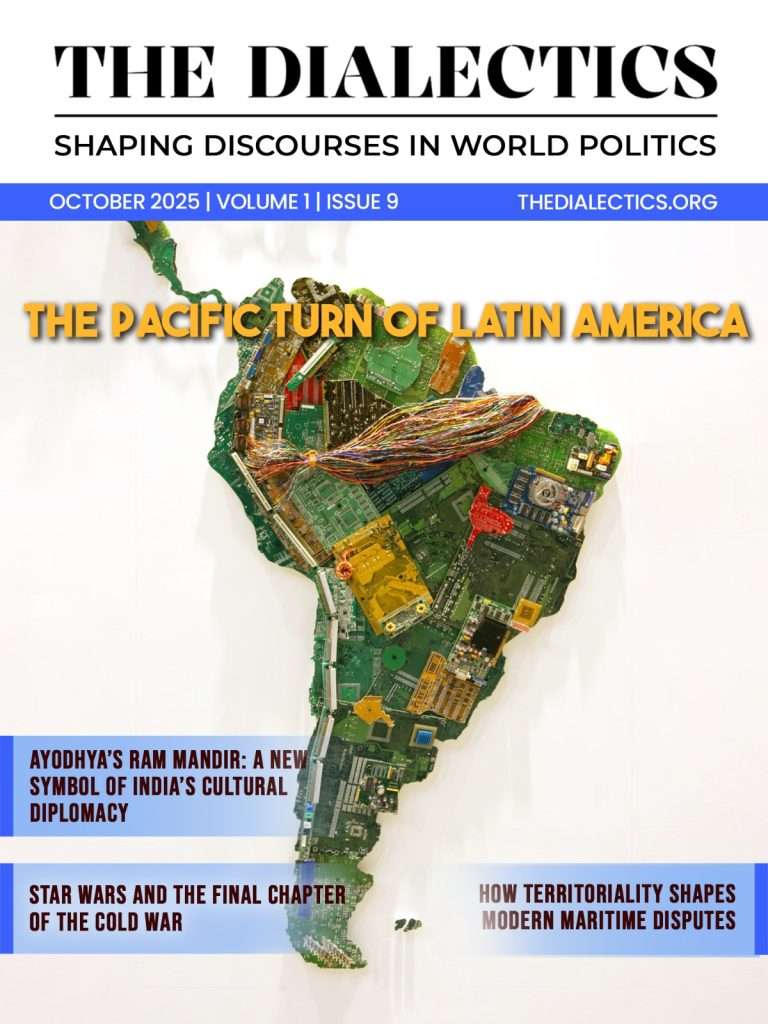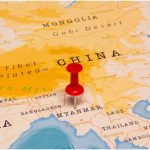Introduction
Sri Lanka, being situated along major international sea routes that connect the eastern and western regions of the world, serves as a vital maritime hub for regional connectivity and trade. In recent years, the country has faced substantial political and economic upheaval that has altered its domestic priorities and foreign policies. Detrimental debt, declining foreign reserves, and import shortages caused the economic crisis of 2022–2023, which resulted in massive public outcry and the Rajapaksa government’s final overthrow. In 2024, the election of Anura Kumara Dissanayake as President marked a significant shift in Sri Lankan politics, ushering in a new leadership pledged transparency, economic recovery, and a balanced foreign policy.
Amidst this transition, Sri Lanka continues to grapple with the effects of the financial crisis, including the need for the external debt restructuring and sustainable development strategies. As a result of these vulnerabilities the island nation’s reliance on external powers—primarily China and India—for economic aid, infrastructure development, and strategic cooperation has intensified. In an effort to further their objectives in the Indian Ocean Region, both regional powers have used this opportunity to increase their influence in Sri Lanka and try to take advantage of its strategic location.
Global and regional powers have long been drawn to Sri Lanka because of its advantageous location along important sea routes of communication in the Indian Ocean. The strengthening of relations between China and Sri Lanka, especially through the Belt and Road Initiative (BRI), has forced New Delhi to reevaluate its approach to diplomacy. India and China both actively trying to strengthen their ties with Sri Lanka shows how important the island has become in the Indo-Pacific region’s politics and strategy.
China-Sri Lanka Relations: Strategic Deepening through Economic Diplomacy
China has emerged as a most important economic and strategic partner for Sri Lanka, particularly post-2010. In the landmark visit of President Anura Kumara Dissanayake to Beijing in January 2025, 15 bilateral cooperation documents were signed. These include key areas such as digital economy development, oil infrastructure, and debt restructuring.
Key Developments:
● BRI Integration with Sri Lanka’s Digital Economy 2030: The alignment of China’s BRI with Sri Lanka’s development vision underscores Beijing’s intent to institutionalize its presence in the island nation’s future infrastructure and digital ecosystems.
● Sinopec Oil Refinery in Hambantota: The $3.7 billion project, with a capacity of 200,000 barrels per day, reinforces China’s influence in a region already under scrutiny due to earlier controversies involving the Hambantota Port lease.
● Agricultural Export Agreement: The opening of Chinese markets to Sri Lankan produce diversifies Sri Lanka’s economic dependencies and is emblematic of Beijing’s soft power push.
● Debt Restructuring: China’s willingness to support Sri Lanka’s IMF program and act as a bridge between Colombo and other bilateral creditors reinforces its image as a “development partner”.
● FTA Negotiations: Progress toward a Free Trade Agreement aims to institutionalize long-term economic interdependence.
India-Sri Lanka Relations: Strategic and Developmental Counterbalancing
India’s involvement with Sri Lanka has been based on the country’s close proximity, shared culture, and need for regional security. Prime Minister Modi’s state visit to Colombo in April 2025 reaffirms India’s strategic shift to offset China’s increasing influence.
Key Engagements:
● Energy Security: The inauguration of a 120-MW solar plant in Sri Lanka by India’s NTPC symbolizes India’s commitment to green development.
● Trincomalee Energy Hub: This initiative aims to transform the eastern coast of Sri Lanka into a regional energy node, providing an Indian counterpoint to Chinese investments in Hambantota.
● Defense Cooperation: Proposed arms exports and joint exercises mark a qualitative shift in Indo-Lankan defense cooperation.
● People-to-People Diplomacy and Development Grants: India continues to invest in housing, education, and healthcare in Sri Lanka through small development projects, sustaining its soft power influence.
Implications for India’s Foreign Policy
India’s foreign policy in the Indian Ocean Region is greatly impacted by the expanding strategic and economic ties between China and Sri Lanka, especially through well-known infrastructure initiatives like the Colombo Port City and the Hambantota oil refinery. These developments challenge India’s traditional sphere of influence and have led to a strategic realignment. Under the SAGAR (Security and Growth for All in the Region) doctrine, India is stepping up its maritime diplomacy and security cooperation with island nations such as the Maldives and Sri Lanka to counterbalance China’s expanding footprint. This includes enhanced naval cooperations, port access arrangements, and the revival of trilateral maritime dialogues. At the same time, India is moving toward more active developmental diplomacy, providing grants, investment, and Lines of Credit in sectors such as energy, transportation, and technology.
In addition to promoting goodwill, these initiatives seek to establish long-lasting economic ties that can compete with China’s Belt and Road Initiative. India is still concerned about the security effects of Chinese-funded infrastructure in Sri Lanka, particularly with regard to dual-use facilities that might be used for military objectives.
Despite Colombo’s claims of neutrality, New Delhi remains alarmed by the recurring docking of Chinese surveillance ships at Sri Lankan ports. In order to protect its interests in the changing geopolitical environment of the Indian Ocean, India’s foreign policy now combines strategic assertiveness, developmental engagement, and vigilant diplomacy.
Sri Lanka’s Balancing Strategy
Sri Lanka’s emerging foreign policy under President Anura Kumara Dissanayake is a complex and pragmatic balancing act between two main regional powers: India and China. President Dissanayake visited New Delhi in December 2024 and Beijing in January 2025, just weeks apart, to follow a balanced diplomatic strategy. Through this approach, Sri Lanka aims to maintain its strategic independence while securing economic and financial support from both India and China. Colombo uses its important location in the Indian Ocean to strengthen ties with both sides, focusing on economic cooperation, infrastructure development, and security partnerships.
The simultaneous deepening of China-Sri Lanka and India-Sri Lanka relations creates a challenging environment for diplomatic relations in the region. China’s substantial as well as strategic investments and key projects in Sri Lanka, such as the Hambantota refinery, pose challenges to India’s traditional influence on the island nation. Conversely, India’s initiatives in energy cooperation and defense, demonstrates its determination to continue playing a key role in Sri Lanka’s development.
Sri Lanka’s approach reflects a pragmatic strategy to harness the benefits of partnerships with both nations while maintaining a degree of autonomy. This delicate balancing act is crucial for Sri Lanka to successfully negotiate the complexities of regional politics and to leverage opportunities for economic and infrastructural advancement.
Conclusion
China-Sri Lanka relations are deepening across crucial areas, most notably infrastructure, trade, and debt diplomacy—presenting India with strategic challenges in its immediate maritime neighborhood. While Sri Lanka gains much-needed economic support from Beijing, India’s traditional sphere of influence is being continuously challenged. The emergence of Chinese-backed projects like the Hambantota refinery and Colombo Port City highlights the urgency for India to recalibrate its foreign policy—not merely through reactive measures, but through sustained, multidimensional engagement.
India’s recent focus on energy cooperation, defense partnerships, and capacity-building initiatives reflects an evolving understanding that influence must be acquired through diligent and customized diplomacy. Going forward, India’s neighbourhood policy must adopt a long-term, institutionalized approach that emphasizes mutual benefit, timely implementation of developmental projects, and strategic communication. India should position itself as a reliable and transparent partner, leveraging its shared history and commitment to regional stability.
Strengthening trilateral cooperation with countries like the Maldives, utilizing multilateral platforms, and enhancing people-to-people connections will be crucial to India’s continued relevance in Sri Lanka and the wider Indian Ocean Region. In this competitive geopolitical space, India’s success will depend on its ability to combine strategic foresight with empathetic diplomacy.




